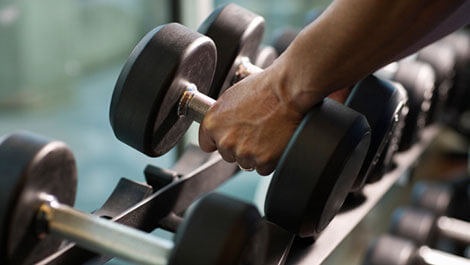How To Design an Effective Strength Training Program
Strength training is a very important aspect of an overall fitness regimen and healthy lifestyle. Most men usually understand this and have no hesitation about going to the gym. Women and older adults (55+) on the other hand are rarely as enthusiastic about lifting. This is a shame, as women and older adults are the people who can benefit the most from a well designed strength training program.
“Fitness – If it came in a bottle, everybody would have a great body.” ~Cher
8 Reasons Everyone Should Lift Weights
- Increased lean muscle mass = faster metabolism & more calories burned daily
- Increased bone density = decreased risk for osteoporosis
- Increase tendon and ligament strength = less risk for injury
- Increased muscular strength, power, and endurance = everyday activities are easier (like bringing the 20lb box of cat litter into the house :-))
- Improved HDL or “good” cholesterol = decreased risk for heart disease
- Improved glucose tolerance = decreased risk for diabetes
- Improved balance, flexibility and stability = your muscles are more resilient and have the ability to react quicker in the event of a fall or a slip, this become especially important as we age
- Enhanced muscle tone = your overall appearance is improved & your self confidence increases 🙂
How to put together your strength routine
- How Often? You need to do strength training 2-3 times per week on non-consecutive days consistently to see results. It will take about 3 months of consistently working out to really begin seeing results.
- How Hard? You need to choose a weight that enables you to perform 8-15 repetitions. Start with a light weight and focus on form and technique. The weight should be somewhat challenging, and should allow you to complete 8-15 repetitions in a slow, controlled manner. The weight should be CHALLENGING. Ladies- you will not “get big” if you lift heavy weights. Use the heaviest weight that still allows for good form.
- How Much? Perform 1-3 sets of 8-15 reps of exercises that focus on the major muscle groups (Ex: Squats, Push ups, Shoulder press, Lat Pull Down, Seated Row, Plank). The exact amount of sets/reps/number of exercises per muscle group is dependent on your goals. See my online coaching page if you would like an exercise and nutrition program designed for you.
- What Kind? You can use machines, free weights, body weight and/or resistance band exercises to achieve results. You have to consider what your goals are, your current level of fitness and what you have available.
I hope this has inspired your to start lifting weights if you are not already doing so. I would love to hear your feedback and questions in the comments section below.
Please share this with your loved ones to help spread the word of living a healthy lifestyle. Thank you for reading, have a fabulous day!
